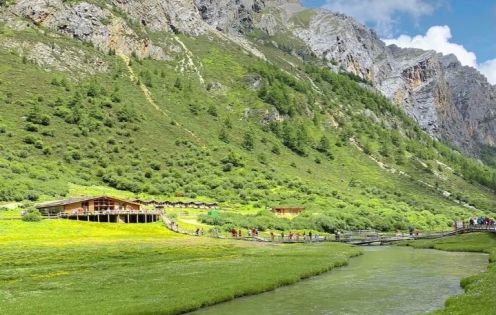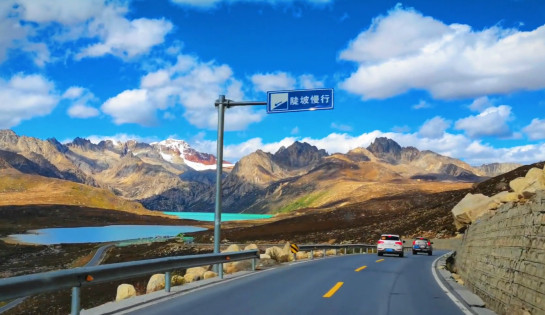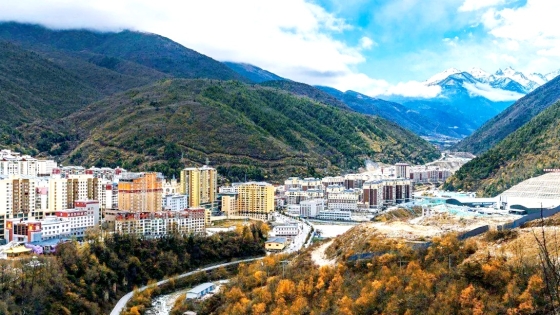Western Sichuan — stretching from Kangding and Tagong to the snow peaks of Daocheng Yading and Ganzi — is one of China’s most breathtaking yet least explored regions. With its blend of Tibetan culture, sacred mountains, and alpine lakes, it attracts travelers seeking wild beauty and authenticity. But because of its remoteness and high altitudes, many wonder: is it safe to travel there? The answer is yes — if you’re prepared, informed, and respectful of local conditions.
Understanding Western Sichuan’s Geography and Culture
Western Sichuan, often called “Kham Tibet,” is part of the Tibetan cultural region, not far from the eastern border of Tibet Autonomous Region. It includes Kangding, Ganzi, Litang, Dege, Seda, and Daocheng Yading, areas known for winding mountain roads, snow peaks, and monasteries perched on cliffs.
The region is safe for travelers, but because of its remote terrain, high altitude, and variable weather, it’s important to plan ahead and understand local customs. Most residents are ethnically Tibetan, so visitors should respect Buddhist traditions and avoid photographing monks or religious sites without permission.

yading
Political and Travel Safety
Western Sichuan is open to foreign and domestic travelers — no special Tibet Permit is required, unlike Lhasa or Shigatse. However, certain border areas near Tibet or Qinghai may occasionally restrict access due to weather, road repairs, or local events.
Local authorities prioritize traveler safety, and tourist areas are generally well-regulated. You might encounter police checkpoints, especially along highways — this is normal and ensures that travel remains secure. Always carry your passport and hotel registration documents with you.
Transportation and Road Conditions
The most common concern in Western Sichuan isn’t crime — it’s road safety. The region’s roads, including parts of the G318 Highway and G350, wind through steep valleys and mountain passes above 4,000 meters.

G318
Here’s what to keep in mind:
-
Driving or hiring a local driver is recommended; mountain roads can be challenging for newcomers.
-
Travel slowly and rest often, especially if you’re adjusting to altitude.
-
Winter (Dec–Feb): Expect icy roads and possible closures around Litang and Yading.
-
Summer (Jul–Sep): Landslides and rain can temporarily block routes — check conditions before departure.
Despite these challenges, thousands of tourists safely travel these roads each year — the views along the way are worth the journey.
Altitude and Health Considerations
Much of Western Sichuan sits above 3,000–4,500 meters, so altitude sickness is a real concern, especially in areas like Litang or Daocheng Yading.
Tips to stay healthy:
-
Spend a night or two in Kangding (2,600 m) to acclimatize before heading higher.
-
Stay hydrated, avoid alcohol, and rest frequently.
-
Carry oxygen or altitude medication if you’re prone to symptoms.
-
In case of severe discomfort (headache, nausea, dizziness), descend immediately.

Kangding
Most travelers adapt well after a couple of days — just remember to take it slow and enjoy the scenery.
Weather and Seasonal Safety
Western Sichuan’s climate varies sharply with altitude and season.
-
Spring (April–June): Roads reopen, valleys bloom with wildflowers, and it’s one of the safest, most comfortable times to visit.
-
Summer (July–September): The landscapes are lush, but heavy rain can trigger landslides. Travel with flexibility.
-
Autumn (October–November): Crystal-clear skies and colorful forests — ideal for photography.
-
Winter (December–March): Fewer tourists and stunning snow views, but some mountain routes may close.
Layered clothing and sturdy shoes are essential — even in summer, temperatures can drop below freezing at night.
Personal Safety and Local Etiquette
Western Sichuan is extremely safe in terms of crime. Theft is rare, and locals are known for their warmth and hospitality. However, cultural respect is vital:
-
Avoid touching religious objects or walking counterclockwise around monasteries.
-
Dress modestly when visiting temples.
-
If invited into a Tibetan home, accept tea or food with both hands as a sign of respect.
Simple politeness and curiosity go a long way toward creating meaningful interactions.
Emergency and Medical Support
Major towns like Kangding, Ganzi, and Daocheng have hospitals and clinics, though facilities in smaller villages can be limited. Carry basic medicine, first-aid supplies, and altitude tablets.
If you plan long treks or remote photography trips, share your itinerary with your hotel or guide. Hiring a local Tibetan guide is strongly recommended — not only for safety but also for cultural insight and smoother travel.
Traveling Responsibly in Western Sichuan
Responsible travel is key to preserving the fragile environment and cultural heritage of this region:
-
Minimize plastic waste; bring a refillable water bottle.
-
Avoid disturbing wildlife or walking off marked trails in Yading or Gongga areas.
-
Support local guesthouses, restaurants, and artisans rather than large chains.
Your journey becomes far more rewarding when it benefits the people and landscapes that make Western Sichuan so unique.
Conclusion
So, is it safe to travel in Western Sichuan? Absolutely — if you’re informed and respectful. The region’s challenges are part of its charm: winding roads, thin air, and vast horizons that remind you of nature’s power. Whether you’re trekking in Yading, meditating at a monastery in Tagong, or photographing the G318 Highway, Western Sichuan promises adventure, authenticity, and spiritual depth — all in safety.
For customized travel routes, guided tours, and up-to-date safety advice, visit China Dragon Travel and plan your unforgettable journey into the wild heart of Sichuan.











